
A modern resort honoring the island life, built on shared support
HOSHINOYA Taketomi Island, the third property in the HOSHINOYA collection, opened on June 1, 2012, bringing its signature blend of unique themes and exceptional experiences to Taketomi Island. The resort's concept, "Paradise on the Island of Community," is reflected in its design, which authentically recreates a traditional island village. Guests stay in single-story wooden villas, stroll along white sand paths bordered by Ryukyu limestone walls, and admire the vibrant tropical flora that adorns the landscape. The resort offers a complete island experience, from meals featuring local ingredients to immersive cultural activities and restorative spa treatments, all designed to capture the island's tranquil rhythm. This allows guests to experience a stay that mirrors the enduring traditions and evolving life of a genuine Taketomi village. Our Concept: "Paradise on the Island of Community"
Our Concept: "Paradise on the Island of Community"
Central to the island's way of life is "Utsugumi," a spirit of unity and cooperation. Taketomi Island, formed by the uplift of coral reefs, possesses limited natural resources, necessitating a reliance on shared wisdom and cooperative effort. This has given rise to a distinctive culture and a stunning natural environment. HOSHINOYA Taketomi Island leverages this unique context, offering guests not only accommodation within a traditional village setting but also a rich array of experiences that showcase the island's inherent charm. The resort is committed to providing a truly relaxing and extraordinary escape, working in partnership with the local community to safeguard and perpetuate the island's traditions, culture, and natural beauty, thereby fostering a sense of well-being for all who visit.
Comfortable Guest Rooms, Reflecting Tradition for a Residential-Style Stay
An Architecture That Honors Tradition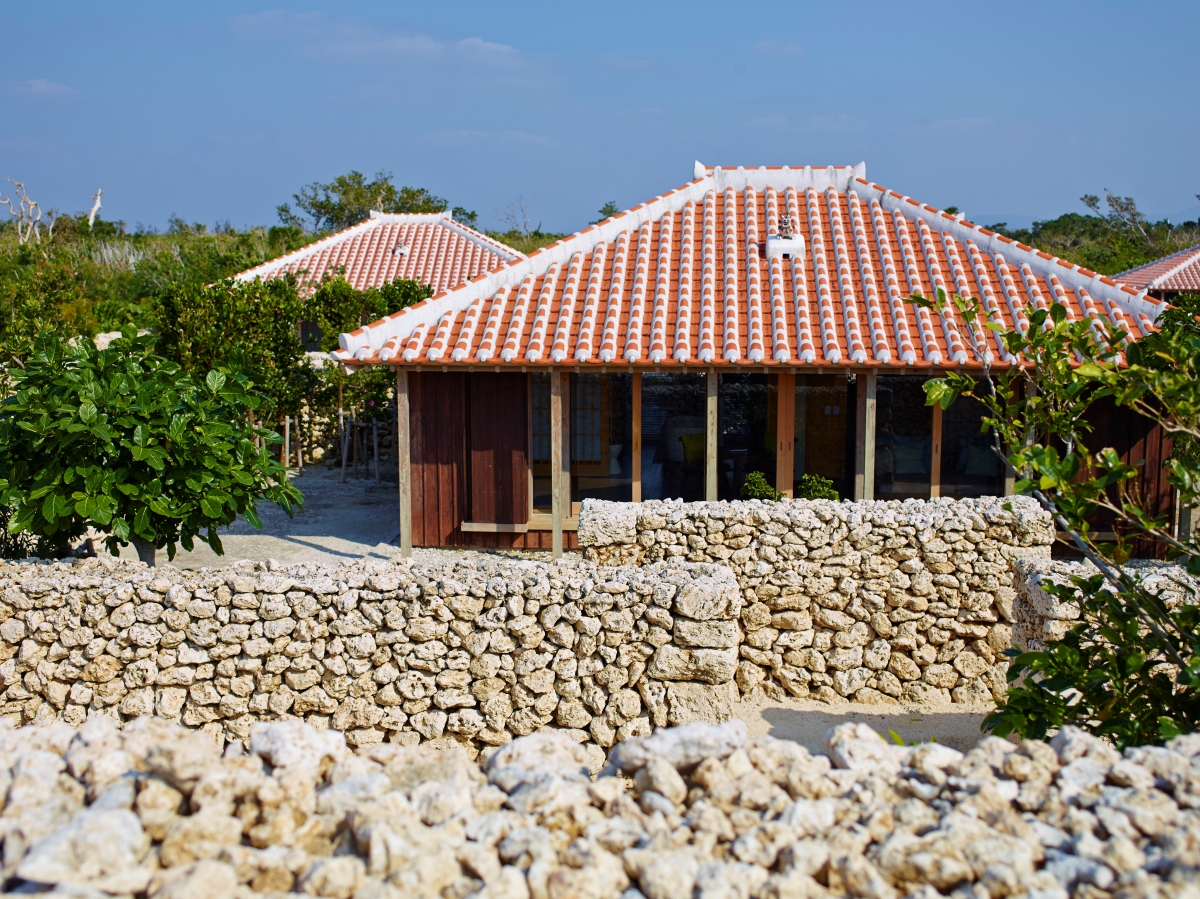 Guest rooms adhere to Taketomi Island's traditional style, featuring Ryukyu red tile roofs, Ryukyu limestone walls, gardens with coral white sand, and "hinpun" screens. Each building is watched over by unique "shisa" roof figures. The surrounding flora is carefully chosen, including vibrant trees and flowers in front and wind-protecting "fukugi" trees in back, following the island's "Landscape Formation Manual." This creates a residential experience.
Guest rooms adhere to Taketomi Island's traditional style, featuring Ryukyu red tile roofs, Ryukyu limestone walls, gardens with coral white sand, and "hinpun" screens. Each building is watched over by unique "shisa" roof figures. The surrounding flora is carefully chosen, including vibrant trees and flowers in front and wind-protecting "fukugi" trees in back, following the island's "Landscape Formation Manual." This creates a residential experience.
"Kaze-no-Ma," Where the South Wind (Paikaji) Flows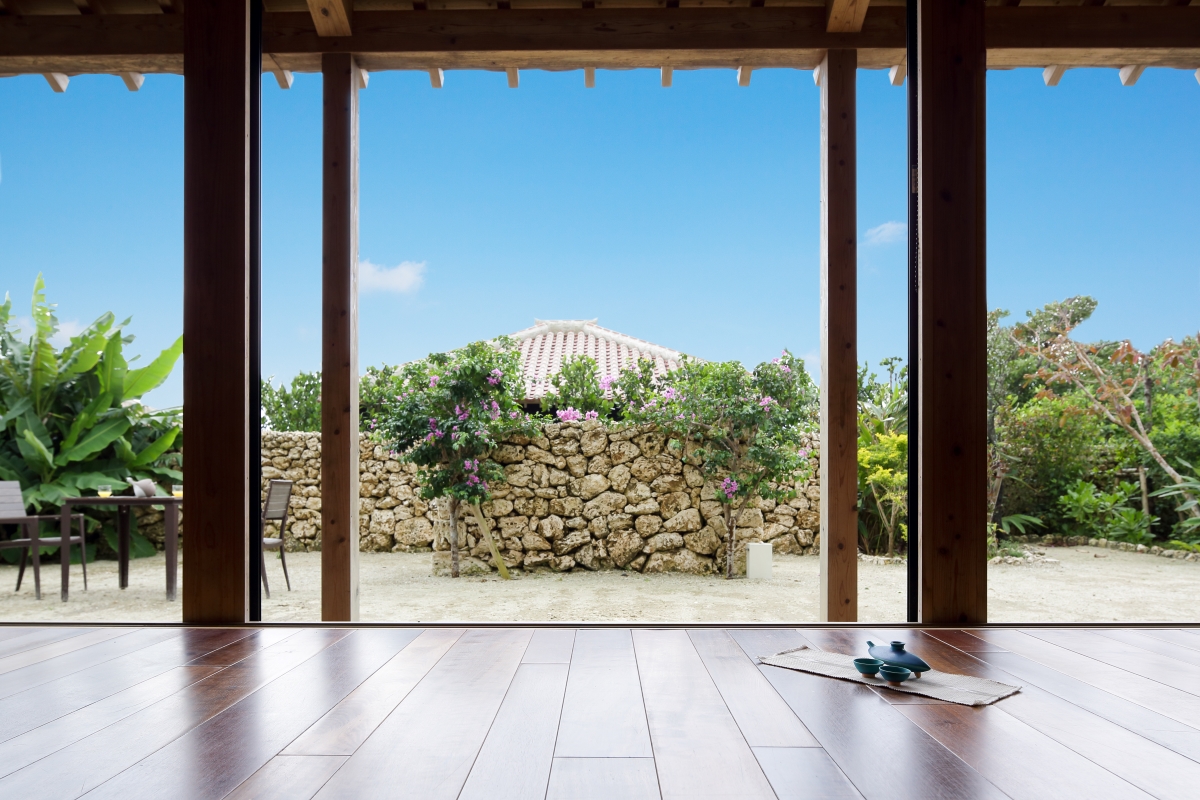 The south wind, considered auspicious, is welcomed by full-wall glass doors on the south side of each room. Opening these doors, along with those on the north side, allows breezes to flow through. The south-facing living area is called "Kaze-no-Ma" (wind room), allowing guests to relax in the island's natural breezes.
The south wind, considered auspicious, is welcomed by full-wall glass doors on the south side of each room. Opening these doors, along with those on the north side, allows breezes to flow through. The south-facing living area is called "Kaze-no-Ma" (wind room), allowing guests to relax in the island's natural breezes.
Interiors with Modern Comfort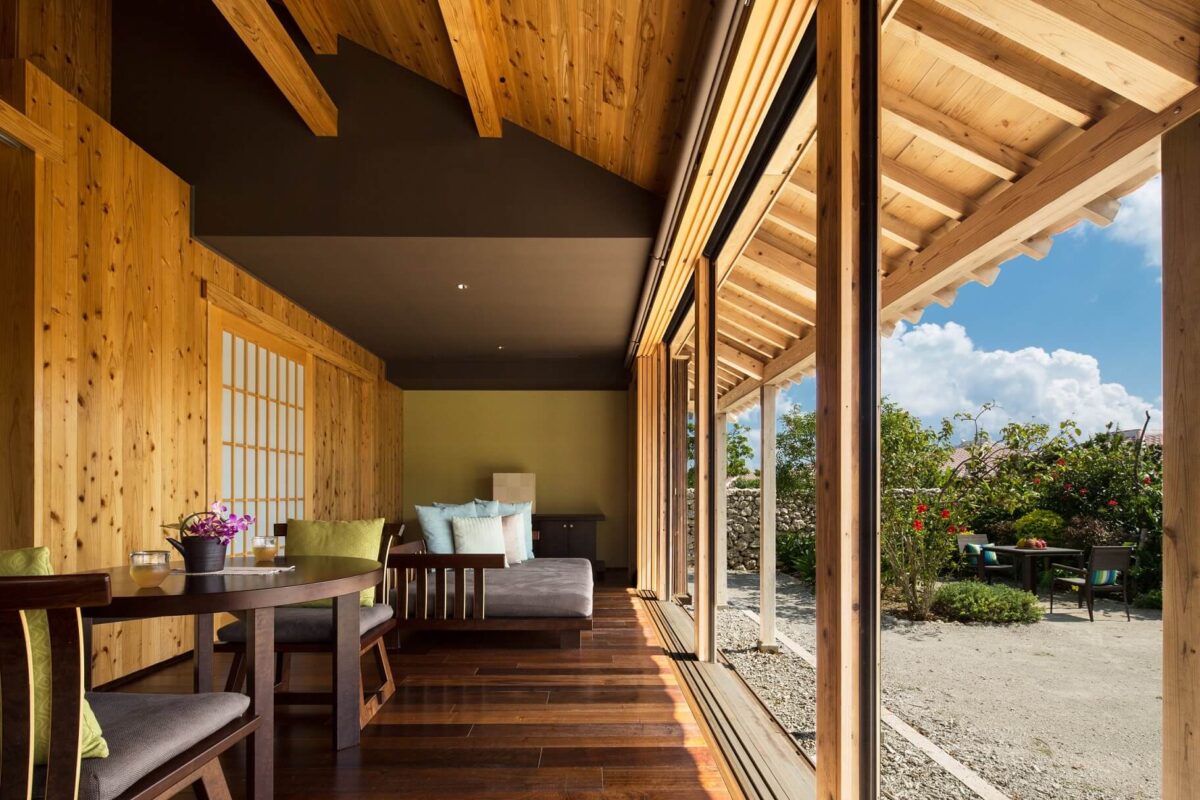
Of the 48 villas, 28 are Western-style with flooring, and 20 are Japanese-style with tatami mats. All rooms include daybeds for relaxation. The bathrooms, particularly in the Zuki (Triple Villa) and Gajoni (King Villa) types, feature modern, open designs. Bedrooms are designed for restful sleep. This creates a comfortable space that blends tradition with modern amenities.
Villa Types
All three villa types are named after familiar island trees.
Areas for Relaxation and Island Time
Yuntaku Lounge
The lounge, available to guests at any time, is a relaxing space surrounded by floor-to-ceiling glass windows, offering ever-changing views of the outdoors. It is a place where guests can experience the island's culture through various events, such as traditional dyeing and weaving, 'Island Moments' featuring freshly made snacks, and 'Evening Moments' serving cocktails made with original syrups and awamori. The lounge has a bright and welcoming atmosphere, fostering spontaneous 'yuntaku'*1 among guests.
*1: 'Yuntaku' is a Taketomi Island word for 'chatting'."
Pool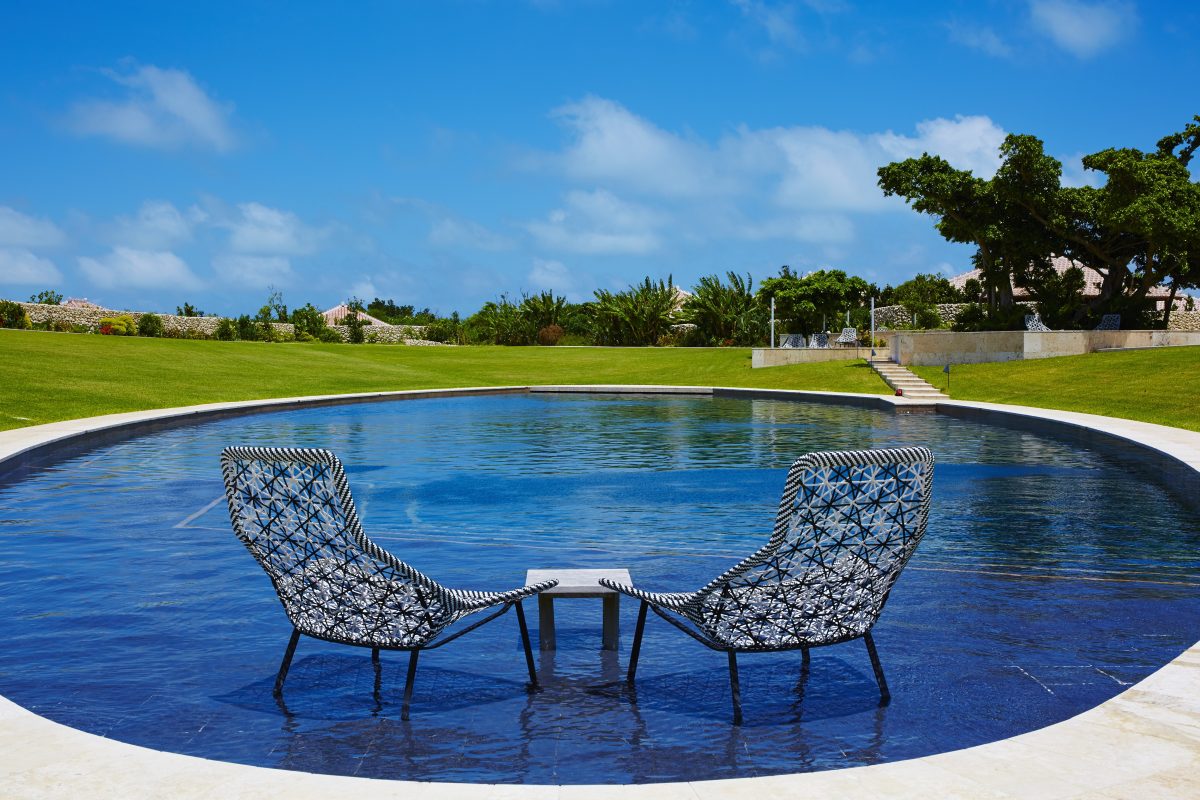
The 46-meter heated pool is open 24 hours a day, year-round. Its oval shape blends with the natural landscape, and the black tiles reflect the sky. The sloping design allows for varied enjoyment, from swimming to relaxing in the shallows. With an open view, guests can enjoy clear blue skies and starry nights, fully experiencing nature.
Observation Deck Offering a complete view of HOSHINOYA Taketomi Island's village, this hilltop spot by the sea provides 360-degree scenery. Enjoy the ever-changing views, from sunrise sea sparkles to midday red roofs and starry night landscapes.
Offering a complete view of HOSHINOYA Taketomi Island's village, this hilltop spot by the sea provides 360-degree scenery. Enjoy the ever-changing views, from sunrise sea sparkles to midday red roofs and starry night landscapes.
Island Time Spa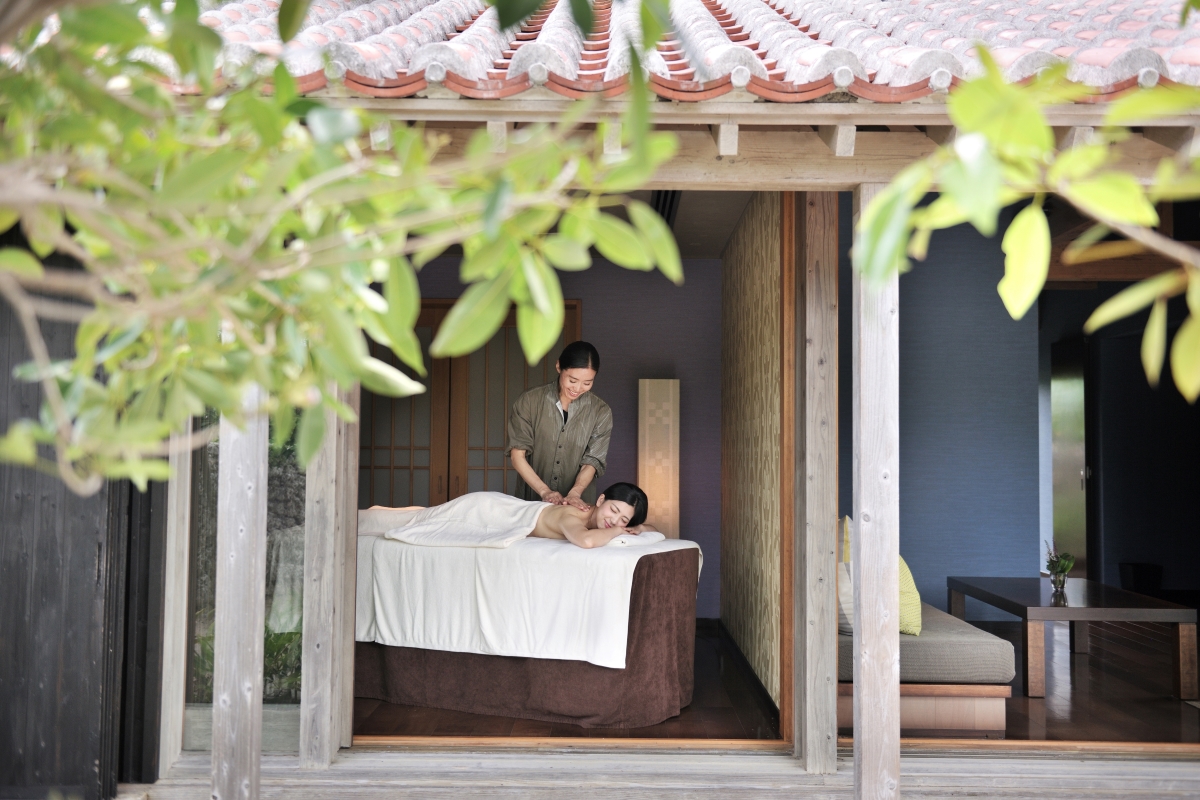 The spa building is tucked away, slightly removed from the villa area. Enclosed by taller stone walls (gukku), it offers a uniquely private and tranquil space. Here, we provide treatments using eco-conscious, water-soluble gels. In addition to expert techniques, the aromatic oils blended with island-sourced ingredients help harmonize the mind and body, promoting a peaceful state. The garden visible from the treatment rooms reflects this serene state.
The spa building is tucked away, slightly removed from the villa area. Enclosed by taller stone walls (gukku), it offers a uniquely private and tranquil space. Here, we provide treatments using eco-conscious, water-soluble gels. In addition to expert techniques, the aromatic oils blended with island-sourced ingredients help harmonize the mind and body, promoting a peaceful state. The garden visible from the treatment rooms reflects this serene state.
Island Inspired Dining
"Island Terroir": Where the Culinary Charms of the Island Meet French Cuisine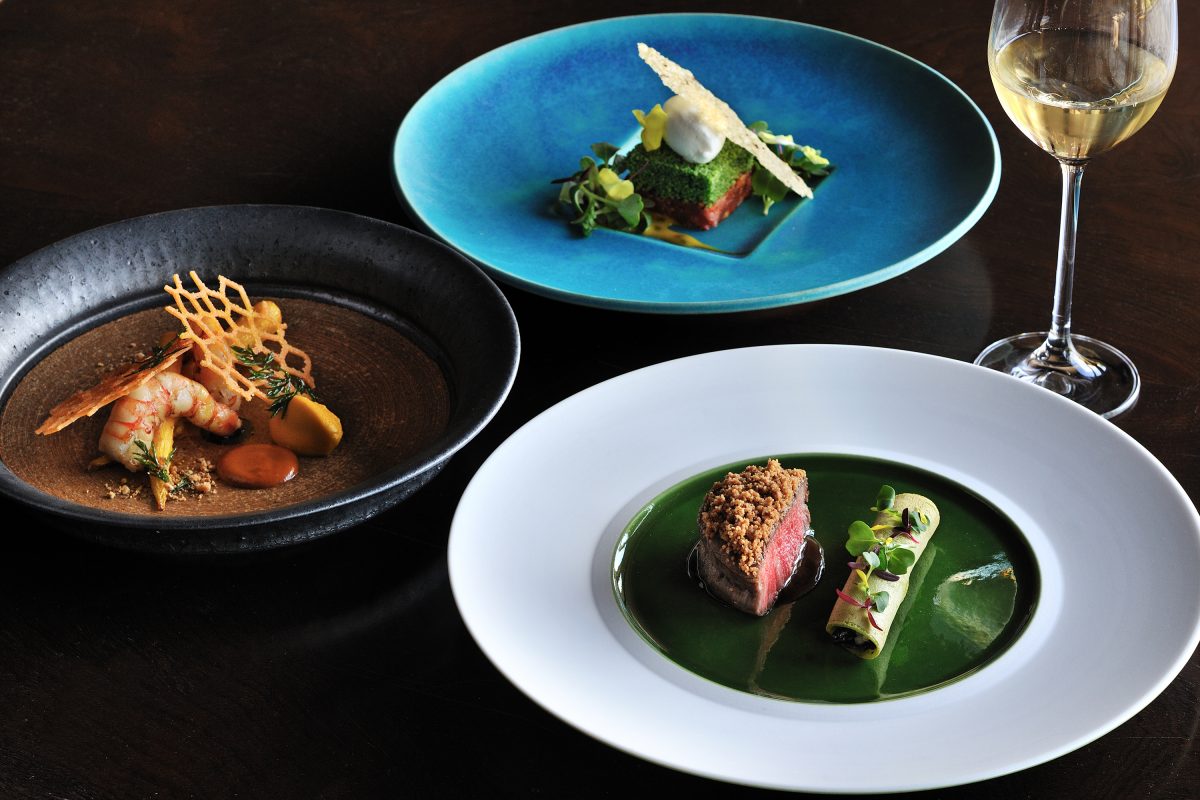 The Yaeyama Islands, Taketomi included, present a culinary experience that surpasses typical tropical offerings. Here, one encounters meats like pork, used in a way that maximizes every part, and goat, reserved for special occasions. Local vegetables and herbs are also central, reflecting the belief that food and medicine share a common origin (*3). HOSHINOYA Taketomi Island's 'Island Terroir' concept celebrates this unique gastronomy, transforming the island's exceptional ingredients and cultural heritage into surprising and refined dishes using French culinary methods.
The Yaeyama Islands, Taketomi included, present a culinary experience that surpasses typical tropical offerings. Here, one encounters meats like pork, used in a way that maximizes every part, and goat, reserved for special occasions. Local vegetables and herbs are also central, reflecting the belief that food and medicine share a common origin (*3). HOSHINOYA Taketomi Island's 'Island Terroir' concept celebrates this unique gastronomy, transforming the island's exceptional ingredients and cultural heritage into surprising and refined dishes using French culinary methods.
*3: The concept that medicine and food are both essential for nurturing human life and maintaining health, sharing the same origin.
Location: Dining
Time: 5:30 pm - 8:15 pm (Last entry)
Price: 18,150 JPY per person (tax and service charge included)
Island Local Breakfast
To capture the vitality of island life, HOSHINOYA Taketomi Island offers the 'Island Local Breakfast.' Inspired by the energy of islanders working the fields, the menu features four breakfast choices—two Japanese and two Western—all showcasing local ingredients. The Japanese options include the 'Nine Delicacies (Kunushina) Island Breakfast,' a reimagined 'Usanmi,' and the 'Yushi Tofu Porridge Breakfast.' The Western selections feature the 'Sea Breeze (Umikaji) Breakfast,' a seafood-rich bouillabaisse, and the 'Cereal Breakfast,' highlighting cherished island grains. Guests can also enjoy a variety of drinks made from fresh island produce.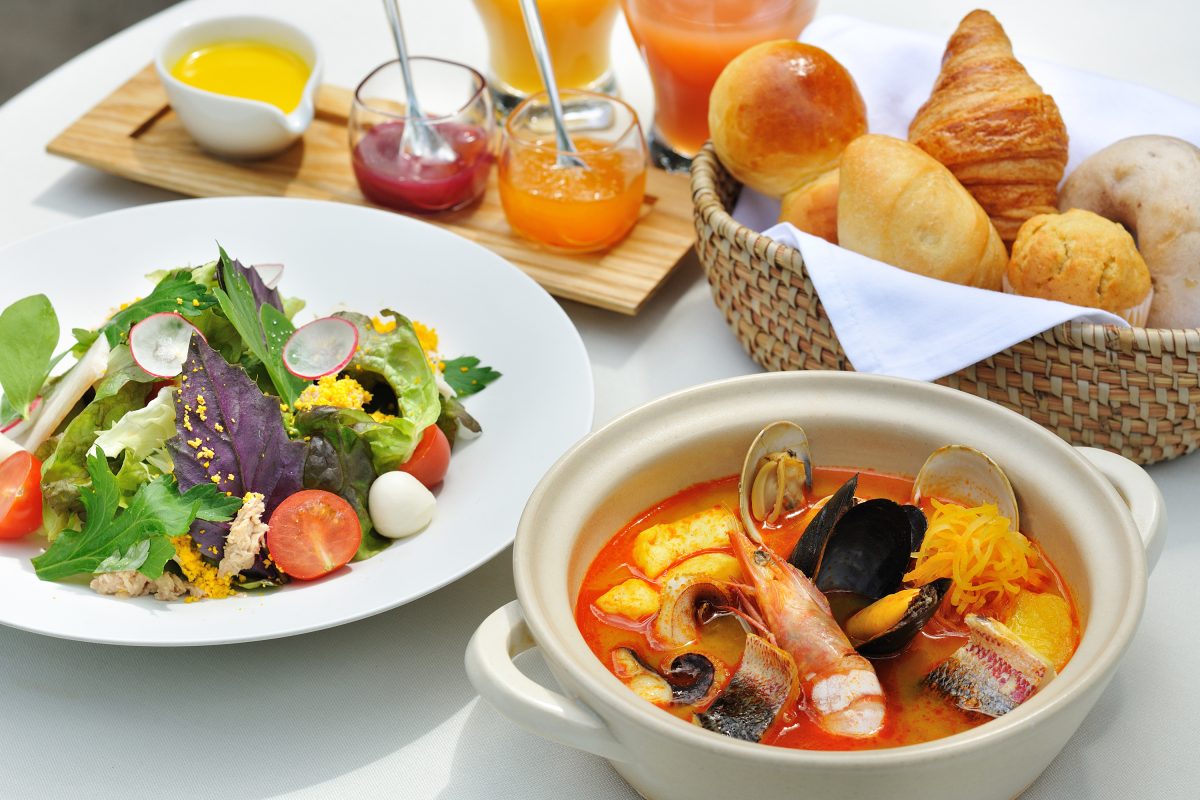 Location: Dining
Location: Dining
Time: 7:00 am - 9:30 am (Last entry)
Price: 4,961 JPY per person (tax and service charge included)
Head Chef: Tatsuo Nakasu Tatsuo Nakasu, born in Tokyo in 1976, is the Head Chef. His culinary journey began with training at renowned Japanese restaurants, followed by roles as sous-chef and head chef in Karuizawa. Specializing in seafood, he later moved to Sado Island, where he honed his skill in maximizing ingredient potential. In 2011, he represented Japan and Asia at the Bocuse d'Or international culinary competition. Nakasu has been with HOSHINOYA Taketomi Island since its 2012 opening.
Tatsuo Nakasu, born in Tokyo in 1976, is the Head Chef. His culinary journey began with training at renowned Japanese restaurants, followed by roles as sous-chef and head chef in Karuizawa. Specializing in seafood, he later moved to Sado Island, where he honed his skill in maximizing ingredient potential. In 2011, he represented Japan and Asia at the Bocuse d'Or international culinary competition. Nakasu has been with HOSHINOYA Taketomi Island since its 2012 opening.
Experiences That Connect You with the Island's Nature and Culture
"Yonna" Deep Breathing
"Yonna" deep breathing, meaning "slowly" in the Taketomi dialect, is held at sunrise on adjacent Aiyaru Beach, offering gentle stretches and deep breaths accompanied by the fresh morning sea breeze. Time: Daily, 30 minutes to coincide with sunrise between 6:20 and 7:30
Time: Daily, 30 minutes to coincide with sunrise between 6:20 and 7:30
Price: Free
"Tinnu" Deep Breathing
Designed to induce relaxation and promote restful sleep, "Tinnu" Deep Breathing takes place under the captivating night sky of Taketomi Island. "Tinnu," the local word for "heaven," aptly describes the experience of practicing deep breathing and gentle stretches on the poolside lawn. The resort's carefully planned lighting enhances the stargazing experience, making it particularly magical during the summer months when the Milky Way shines brightly. This evening ritual offers a moment of tranquility, allowing guests to unwind and prepare for a peaceful night.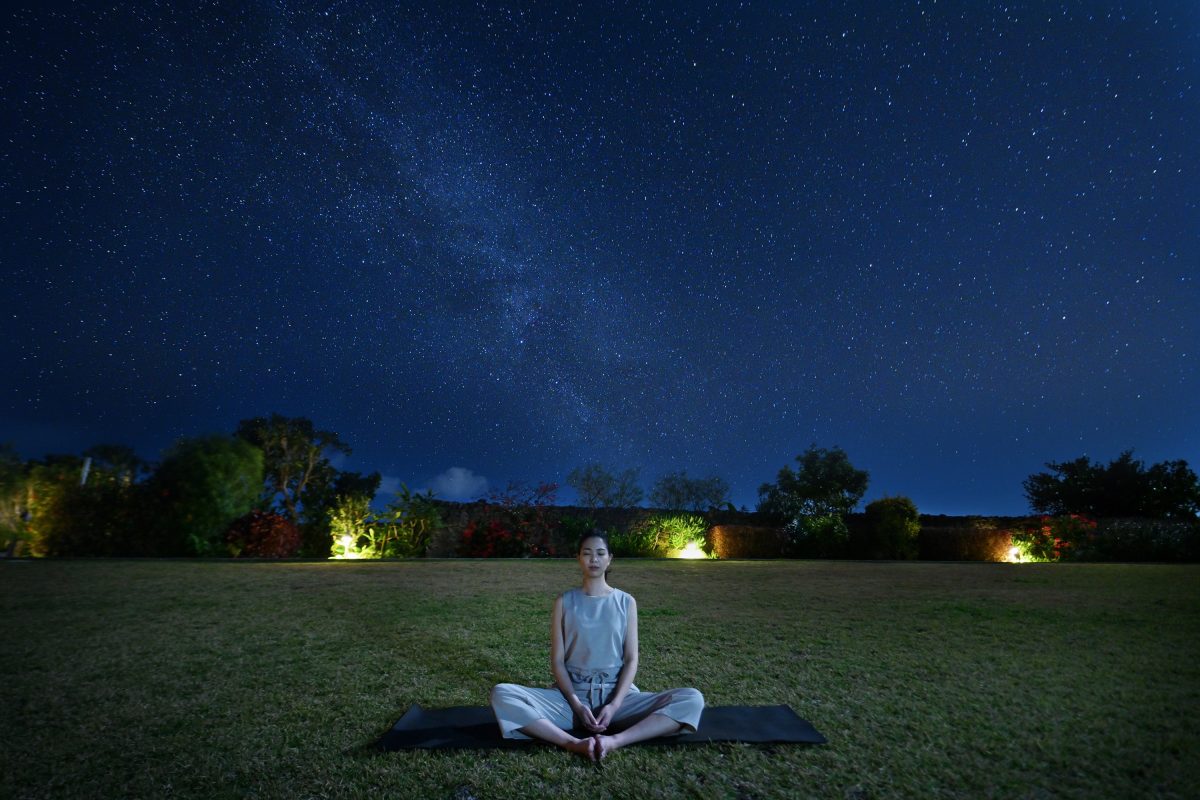 Time: Daily, 9:15pm - 9:45pm
Time: Daily, 9:15pm - 9:45pm
Price: Free
Weaving Bookmark Experience
"Weaving Bookmark" offers a hands-on experience with Taketomi Island's traditional crafts. Guests can create their own unique textiles using plant-dyed yarn on a local loom. The yarns, colored with natural dyes from island flora, feature soft and gentle hues. Participants can choose their favorite colors and craft a personalized piece. Time: Tuesdays and Saturdays, 10:30pm / 11:30pm
Time: Tuesdays and Saturdays, 10:30pm / 11:30pm
Price: 3,025 yen per person (tax and service charge included)
Sunset Private Sabani
Venture out onto the tranquil waters surrounding Taketomi Island with the "Sunset Private Sabani" experience. Guests will sail on a traditional wooden boat, propelled by wind and paddles ("Eku"). This unique journey allows for an immersive experience of the island's natural beauty, particularly as the sky and sea are transformed by the golden hues of the setting sun.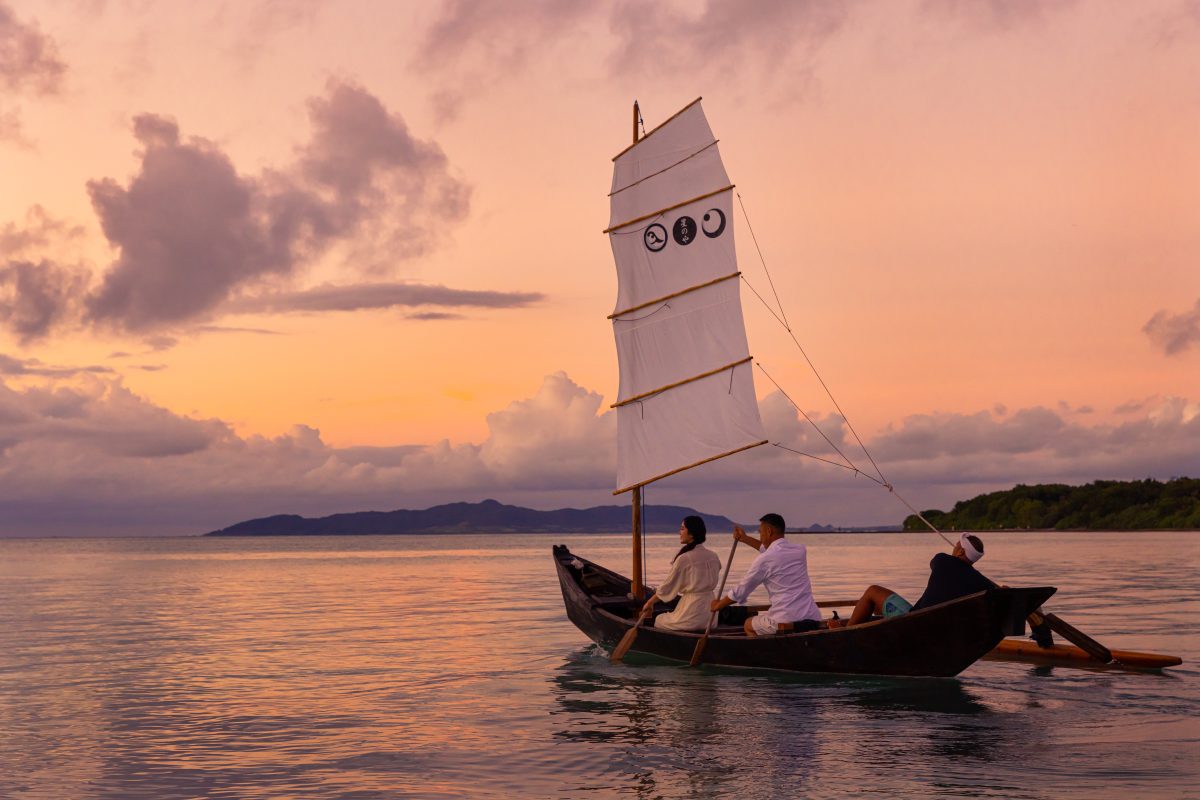 Time: Approximately 2 hours, including sunset
Time: Approximately 2 hours, including sunset
Price: 13,310 JPY per person (tax and service charge included)
Morning Tour in a Water Buffalo Carriage
Experience the serene beginnings of a Taketomi Island day with the "Morning Tour in a Water Buffalo Carriage." Guests will enjoy a leisurely tour through the picturesque village in HOSHINOYA's exclusive water buffalo cart. This tour coincides with the islanders' daily routine of sweeping the white sand roads, offering an authentic glimpse into local life.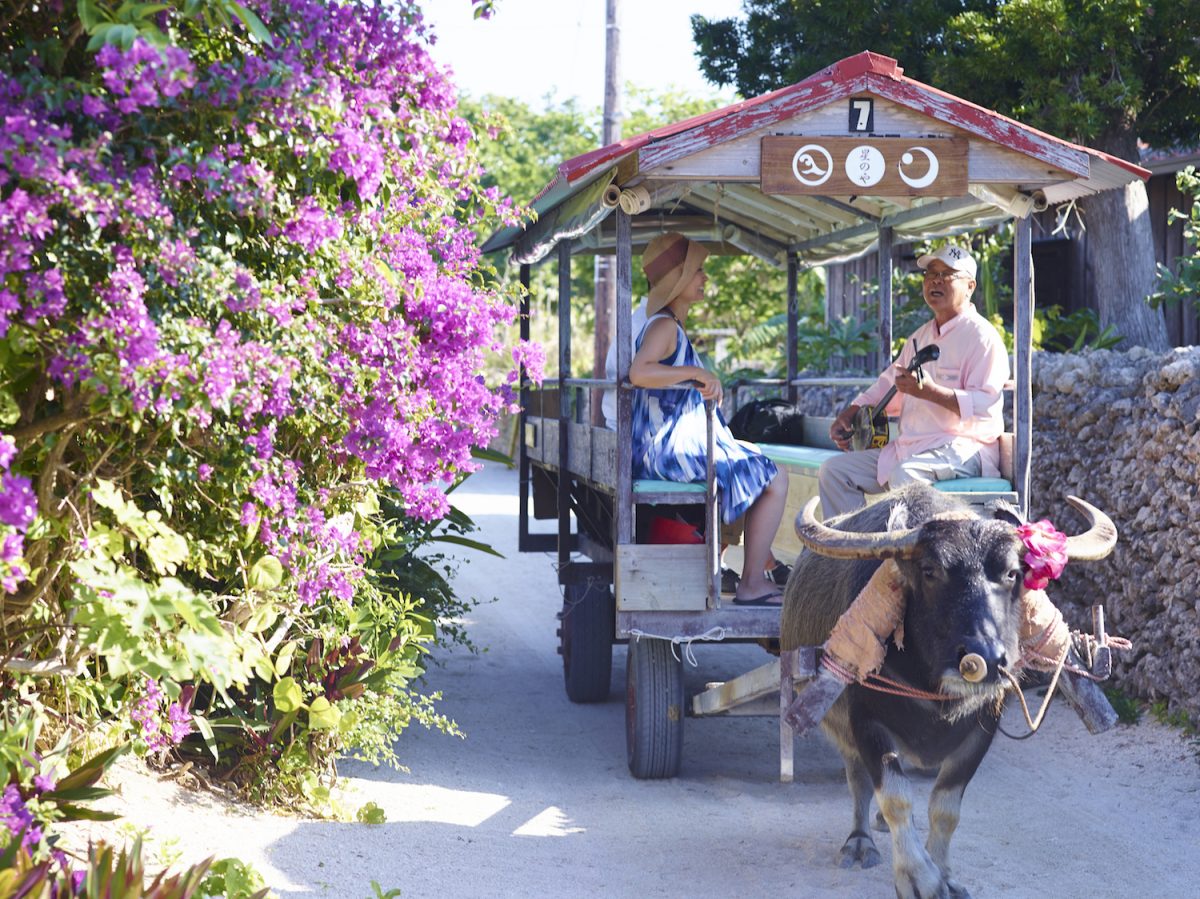 Time: Sundays, Tuesdays, and Wednesdays, 8:30am - 9:30am
Time: Sundays, Tuesdays, and Wednesdays, 8:30am - 9:30am
Price: 3,800 JPY per person (tax and service charge included)
Evening Tour in a Water Buffalo Carriage
Discover the tranquility of Taketomi Island after the day-trippers have departed with the "Evening Tour in a Water Buffalo Carriage." This tour provides a luxurious journey through the sunset-lit village, accompanied by the soothing melodies of the sanshin. Guests will experience the island's peaceful atmosphere during this unique evening tour.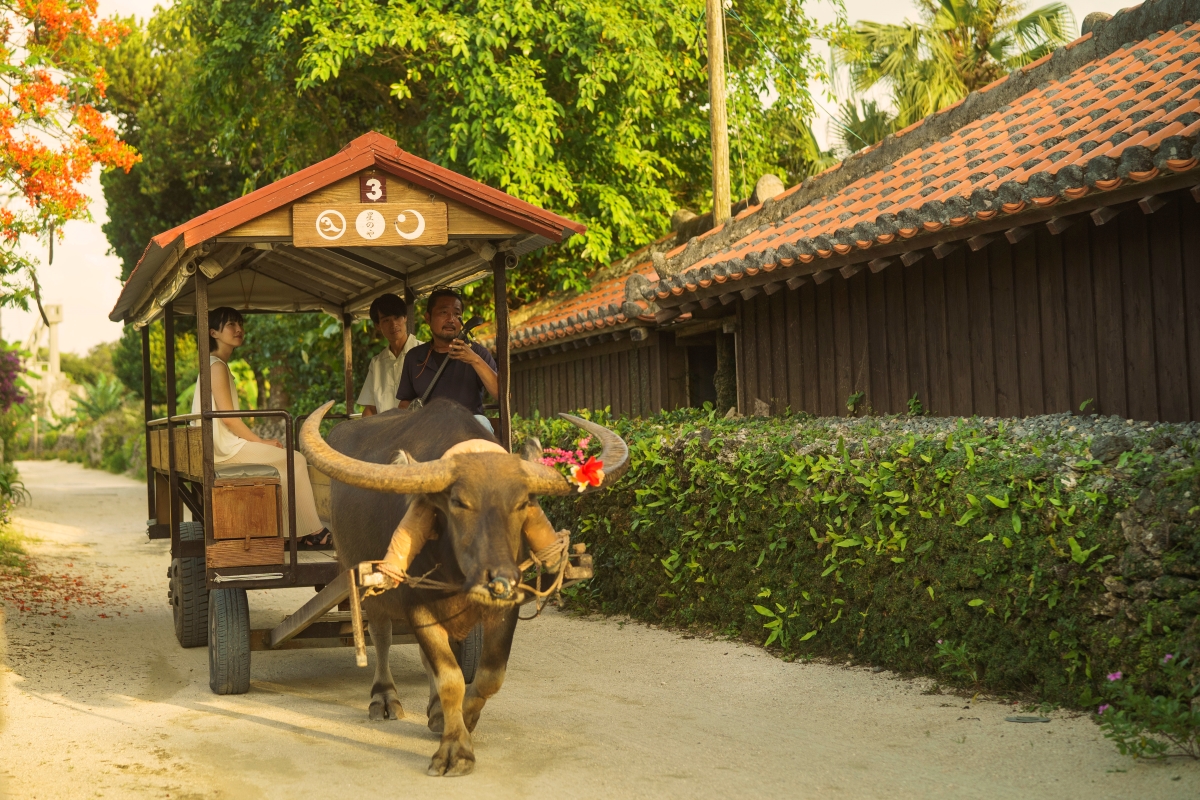 Time: Wednesdays, 6:00pm - 7:00pm
Time: Wednesdays, 6:00pm - 7:00pm
Price: 4,200 JPY per person (tax and service charge included)
Notes about activities at HOSHINOYA Taketomi Island
* Times and details of the activity may change depending on the season.
* Prices include tax and service charge.
* Reservations are required in advance.
Design & Architecture
Architecture– Rie Azuma, Azuma Architect & Associates
In designing the resort, Azuma first observed the ingrained lifestyles and rituals of the Taketomi natives. Everything from the ubiquitous, red-roofed wooden homes to local songs and dances suggested a way of life perfectly tailored to the elements of Taketomi island. The absolute sense of comfort inherent in the island's traditional architectural features greatly influenced Azuma's design. "Gukku" walls allow guests privacy; white sand gardens bring natural light inside; and trees planted north of each pavilion block strong winds. Wind was a major factor in the pavilion's design. Wood-framed glass doors face south towards the garden. Opening them allows the island's soothing breezes to travel freely through the pavilion, imbuing it with the rhythms of time passing on the island.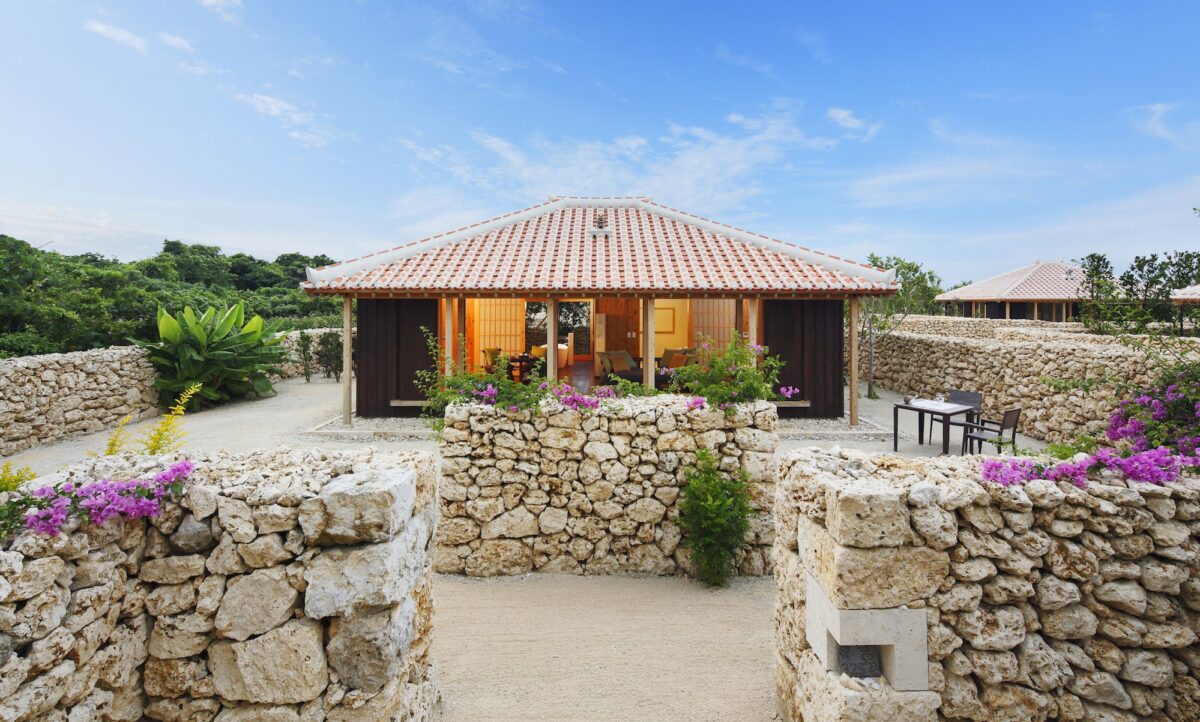 Landscape – Hiroki Hasegawa, Studio on site
Landscape – Hiroki Hasegawa, Studio on site
Taketomi Island is one of the few remaining places in Japan where life is centered around traditional villages, cultures, and arts. Hasegawa's biggest challenge was how to introduce a resort, offering something new, into such a compact universe without disrupting its continuity. He learned that homes on Taketomi were once built behind concentric walls around a castle-like structure. Modern homes, however, are each surrounded by stone walls and situated parallel or perpendicular to each other. Hasegawa decided to incorporate both elements into his design. The more Hasegawa looked into Taketomi's architectural features, the more he saw how specific they were to this island in the way they offered privacy and protection from the elements. He realized these features would not only serve the landscape but also the resort's guests.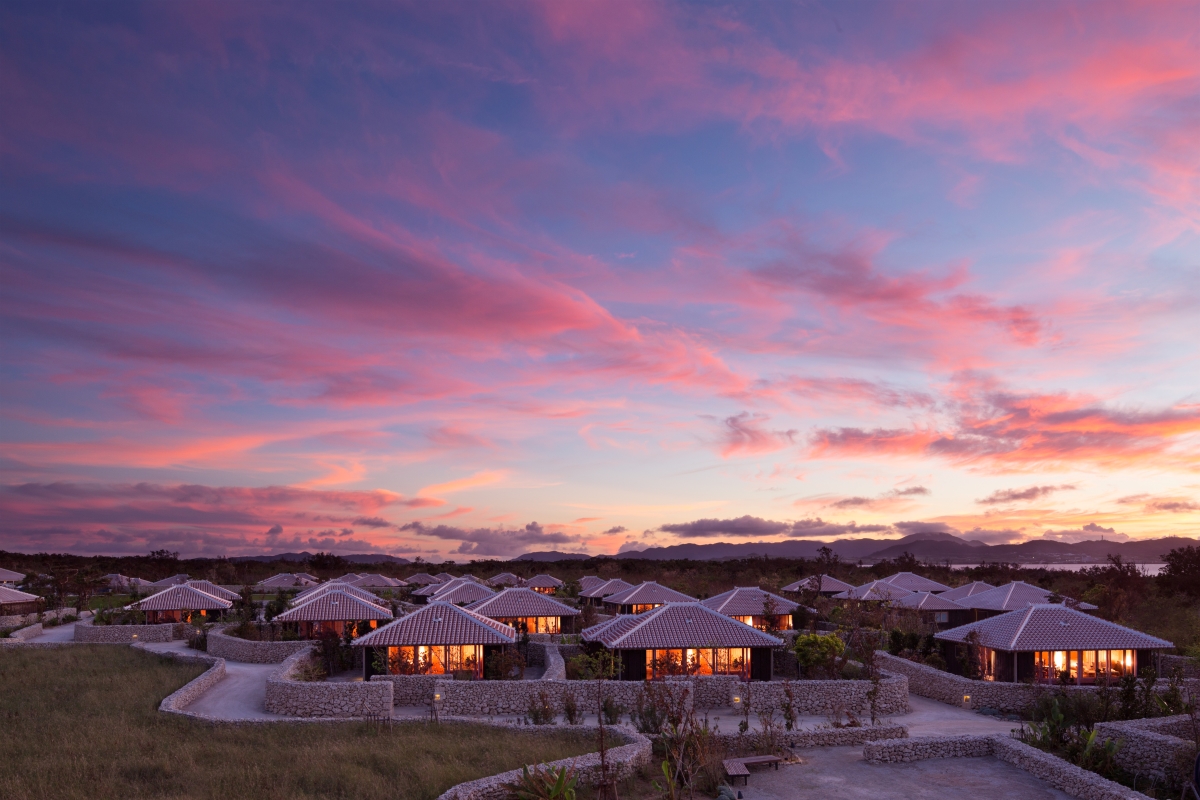 Lighting – Masanobu Takeishi, Illumination of City Environment, Ltd.
Lighting – Masanobu Takeishi, Illumination of City Environment, Ltd.
Takeishi's focus was to preserve the natural lighting of the island. By avoiding the use of strong lights, blocking light that shines upward, and employing sparse small lights in key locations, he has created a lighting scheme that gives way to the beauty of the moonlight and starlight.
Initiatives to Preserve Local Traditional Culture and the Natural Environment
The Field Project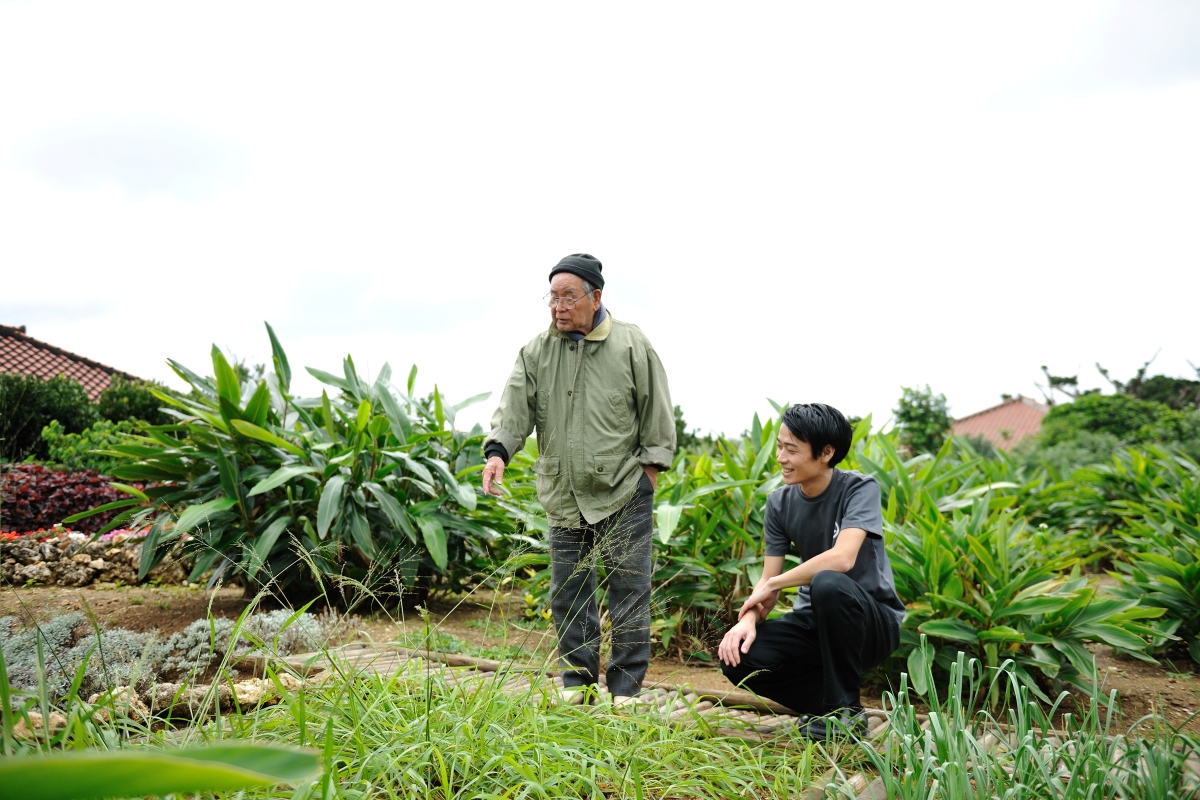
The Field Project stands as an initiative dedicated to preserving Taketomi Island's distinctive field culture and agricultural heritage. Recognizing the challenges posed by increased tourism to the preservation of traditional farming practices and unique island crops, HOSHINOYA Taketomi Island established a dedicated field within the resort in 2017. Under the tutelage of the island's last remaining elder farmer, cultivation of traditional crops began. Notably, two years later, harvested millet was successfully offered at the island's significant 'Tanadui Festival.' Beyond cultivation, the project actively engages in educational endeavors, including field experiences for children, and plays a crucial role in the revival of the once-lost Kohama soybeans. These efforts are all aimed at ensuring the island's rich agricultural traditions are passed on to future generations.
For a comprehensive overview of the project's journey, detailed information is available in 'The Field Project' document:
https://drive.google.com/file/d/1mGPQh7iPIydntYw_mOYmko
Self-Sufficiency in Water through Seawater Desalination
In 2021, we began operating a 'Seawater Desalination Heat Source Water Heater Heat Pump Unit,' allowing us to produce our own drinking water from seawater. This decision stemmed from our commitment to being plastic-free, which included discontinuing the provision of bottled drinking water. The challenge was ensuring a sustainable water supply on Taketomi Island, where water resources are limited, to replace the bottled water. This system was introduced to secure a sustainable water supply without increasing the amount of water sent to the facility. Integrated with solar power generation, the unit can operate independently even during disasters, enabling self-sufficiency in water, hot water, and electricity within the facility. As a result, HOSHINOYA Taketomi Island was designated as the first designated evacuation site among private companies in Taketomi Town.
Detailed information:
https://drive.google.com/file/d/1wFj5S2He23jcZQu8AePUFgFxrZVykzmv/view?usp=share_link
Overview of HOSHINOYA Taketomi Island
Address: Taketomi, Yaeyama, Okinawa 907-1101
Number of Rooms: 48
Check-in: 3:00 pm/Check-out: 12:00 pm
Price: Starts from 112,000 JPY per night per room (includes tax and service charge, excludes meals)
Directions: 10 minutes by ferry from Ishigaki Port, free shuttle bus available from Taketomi Port 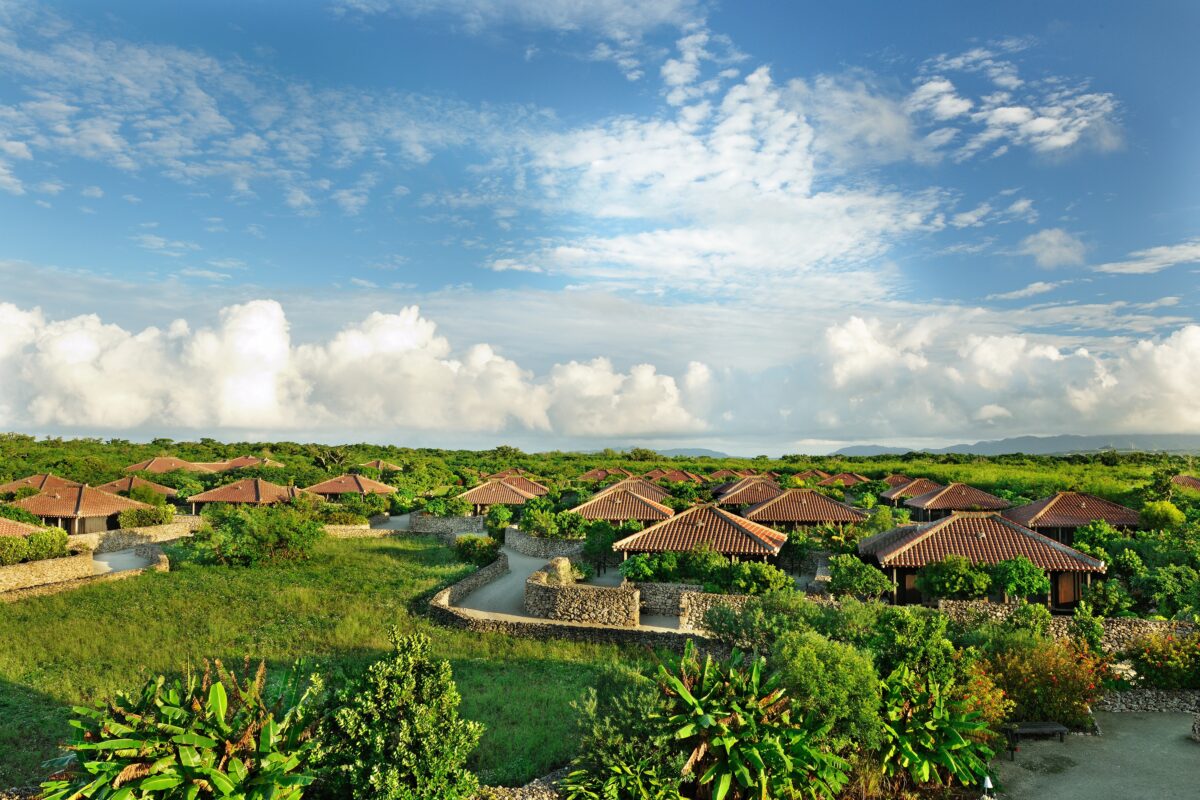
About HOSHINOYA Brand
Luxury hotel embodying the true characteristics of land, history, and culture
HOSHINOYA is an accommodation with distinct themes, conceptualized from each location's land, history, and culture. Woven into these distinct themes is our attention to detail in every aspect from the design to hospitality; contributing to the creation of a one-of-a-kind world of HOSHINOYA. Enrich the heart with the epiphanies of travel through a unique stay experience.
About Hoshino Resorts
Hoshino Resorts was first established as a Japanese inn/ryokan in 1914 in Karuizawa in Nagano Prefecture before it began the operation of other resorts in Japan. Today, it has evolved into a highly influential hotel management company and is run by 4th-generation family member Yoshiharu Hoshino. Providing a unique experience focused on the local charms of each destination and a high level of omotenashi, Japanese-style hospitality, the company has expanded rapidly out of Karuizawa since 2001 and now operates more than 60 accommodations both in and outside Japan with one of the following categories: luxury hotel brand “HOSHINOYA,” hot spring ryokan brand “KAI,” countryside resort hotel brand “RISONARE,” city tourism hotel brand “OMO,” free-spirited hotel brand “BEB,” or other unique lodgings.